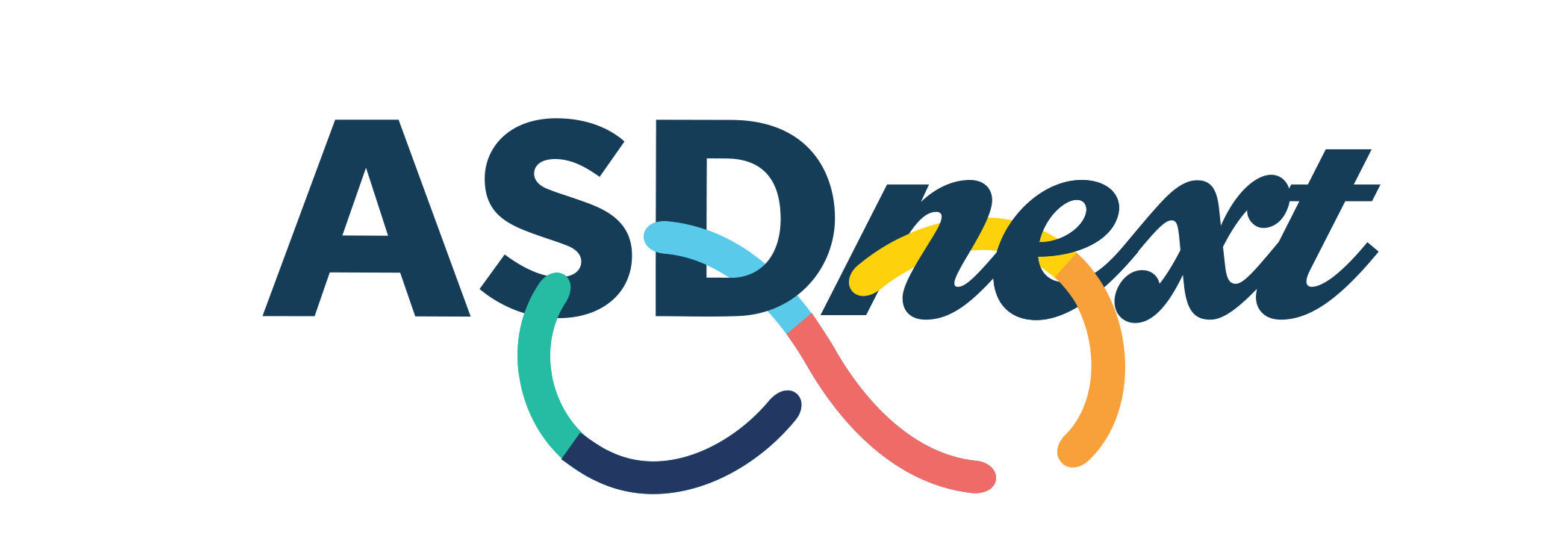Positive Approaches Journal, Volume 9, Issue 4
Skiffen & Moonley | 41-50

Volume 9 ► Issue 4 ► 2021
Building Healthy Relationships Together: Healing the Past to Promote a Positive Future
Melissa Skiffen & Shelbi-lynn Moonley
Abstract
Throughout this article we will explore the challenges that people with disabilities often experience in understanding and forming healthy long-lasting relationships and the detrimental impact this may have on our community. We will further discuss the collaborative effort between Blackburn Center, an agency providing services to victims of domestic violence, sexual assault, and other crimes, and Achieva, a disability service organization, to build a community of practice in order to address these challenges and further promote such healthy relationships among people who have disabilities through Person-Centered Planning and a Trauma-Informed Approach.
Relationships
‘Relationships’ is a term that brings emotions of intimacy and togetherness for many people. A connection that makes us feel whole. However, what if this was a term that you did not feel applied to you because there was a cultural stigma that felt that you could not understand how to navigate the social normality and consequences of being in an intimate relationship. Therefore, you would fail to benefit from the education of learning about developing healthy relationships, furthering the divide between you and those who are seen as neurotypical. This is the truth for many people growing up with a disability. A student that is segregated in school and is not afforded the opportunity to learn alongside their typical peers may not have the tools needed to build healthy relationships as an adult in an inclusive setting. A sixty-year-old person who spent three decades living in an institution will not have the tools to form healthy relationships with the community they move into. A person who is transitioning from too many years in a 14(c) sheltered workshop to an inclusive workplace may not have the skills to fabricate a healthy relationship. These are only some examples of barriers people who have disabilities experience in forming healthy social connections as well as positive self-images and perspectives of self-worth. People with disabilities are often dismissed in the conversation when it comes to relationships and sexuality. This not only creates a divide in power and control, but further increases the risk of vulnerability to trauma from crimes such as domestic violence and sexual assault.
“Nothing About Us, Without Us.”1
This call for policies to include people with disabilities has resulted in a growing movement to promote education and awareness for the needs and inclusion of people with disabilities. Yet, with such consciousness we must also understand the underlying trauma that the disability community has endured and continues to endure at a cultural level in connection to relationships and sexuality. We cannot undo the past, but by building upon two seemingly separate models we can construct a better future. Person-Centered Planning has been commonly used as a model by those who provide services to develop and meet the goals of those with disabilities whereas the Trauma-Informed Approach has been used especially among domestic violence and sexual assault agencies as a method of addressing trauma. Through recognizing the intersectionality between Person-Centered Planning and Trauma-Informed Approach as well as embracing the lessons from each model we can effectively empower people with disabilities to develop safe and healthy relationships.
Person-centered Planning
Person-Centered Planning places a person who has a disability in the driver’s seat of their life. It allows them, often for the first time, to have a seat at the table. It assists them to identify what and who is important to them. What do they envision for a life of personal significance? What do they not want for their life? These are questions we need to be asking every person with a disability we support. Often, people with disabilities, from the time they obtain a diagnosis, have people who are, as Jack Butler, Achieva’s Director of Person-Centered Planning describes, “prescribed to be in their lives” (personal communication, November 5, 2020). The Pennsylvania Department of Human Services describes this model as:
“Person-Centered Planning is unlike any other planning you’ve done before. It focuses on your interests and what you do well rather than on things you can’t do or on your needs alone. A Person-Centered plan is a plan for you, not for a system. You, along with your planning group (circle of support) will create a vision for your future and focus on how to get started on working towards your dream. Your Person-Centered Plan will be especially for you and will be different from anyone else’s plan since it is based upon you and created with you. You choose the people you want to help plan your life. Your plan is a working tool that puts your thoughts in order.” 2
Person-Centered Planning will organically support healthy relationships when done correctly, but it can overlook the covert signs of trauma and vicarious trauma of those supporting the person at the center of the plan. Hence, we need to incorporate an
approach to enhance this model of supportive planning to assist in recognizing not only the signs of trauma but also to contribute to practices that may build upon principles that can potentially prevent re-traumatization.
The Trauma-Informed Approach
This approach was developed by the Substance Abuse and Mental Health Services Administration (SAMHSA) has been widely utilized by those in the human services field, and is ingrained in the services provided by many domestic violence and sexual assault agencies such as Blackburn Center of Westmoreland County, Pennsylvania.3 Although this approach was developed by SAMHSA to support those experiencing addiction and mental health concerns, the Trauma-Informed Approach has been evidenced to be utilized in developing tools to support survivors of abuse, and providing educational resources in an effort to support promoting healthy relationships such as through programs that teach empathy and consent. This approach provides a basis of understanding how trauma impacts those receiving support as well as vicarious trauma experienced by professionals, and helps those supportive systems work to resolve trauma-related issues. Rather than assuming that someone has never experienced trauma, it promotes systems that practice this approach to adopt an opposing view which helps to improve the outcomes of those we provide service to. The Trauma-Informed Approach is based on incorporating six key principles into our daily practices.3 These principles as described below can be adapted to reinforce current supportive models including Person-Centered Planning:
1. Safety. Supporting a definition of safety that is determined by the person who is at the center of the plan. This definition encompasses more than one’s physical safety but their psychological safety as well.
2. Trustworthiness and Transparency. Maintaining transparency in reference to the actions, policies, limitations, and decisions of the circle of support in an effort to build trust that can be modeled in a healthy relationship.
3. Peer Support. Highlighting the importance of developing natural supports from other people who have experienced similar events in addition to mutual self-help.
4. Collaboration and Mutuality. Reaching out to ensure that those at the center of the plan and supports have a role to play in sharing power and decision-making.
5. Collaboration and Mutuality. Reaching out to ensure that those at the center of the plan and supports have a role to play in sharing power and decision-making.
6. Cultural, Historical, and Gender Issues. Recognizing and actively responding to the difficult history of trauma endured by the disability community including institutionalization and cultural stigma.3
There has been an effort at a statewide level to meld practices that are Trauma-Informed as part of Pennsylvania Governor Tom Wolf’s administration plan that was released in July 2020, titled “Trauma-Informed PA” which brings together a multi-agency effort
to “guide the commonwealth and service providers statewide on what it means to be Trauma-Informed and healing-centered in PA.”4 This plan focuses on areas such as, “ensuring that PA state culture is Trauma-Informed through universal training”,
“recognizing and healing from the traumas of major crises like COVID-19”, and “preventing and healing racial, communal, and historical traumas, whether they be individual or systemic.”4
How Can We Bring These Ideas into Practice?
Relationships essentially are connections that we share. In order to help those we serve to promote healthy relationships we must model the principles of building such positive relationships ourselves. To implement this into practice it is recommended to include bringing representatives from each human service field into the conversation to see how we can naturally include disability and victim advocates. Part of the advantage of utilizing Person-Centered Planning is the notion that the person the plan is based around is the one that chooses who is included in helping to develop their plan. In order to organically incorporate both disability and victim advocates at the discretion of the person at the center of the plan, we must recognize and respect the strengths that such fields possess. An advocate from a domestic violence and sexual assault agency may be easily recognized for their ability to offer a perspective on safety planning but also may be able to help with educational needs related to promoting healthy relationships by identifying issues of power and control as a preventive approach to abuse; whereas a disability family support advocate can help navigate the educational system to make these perspectives a reality as part of the person’s individualized plan.
Through working together on a variety of projects that focus on supporting the disability community, we have found some practices that we have included to support those involved in Person Centered Planning through the lens of the Trauma-Informed Approach:
1. Understand the limitations and strengths of local resources through active communication. This can assist in addressing barriers such as silos and providing warm handoffs between agencies.
2. Empower the person with a disability at the center of the plan to develop their own team through openly providing options to include the support of those who can offer different perspectives. Be sure to include coworkers, acquaintances, professionals, friends, family, and romantic partners in these team discussions.
3. Ensure that those included understand and are able to model the six key principles included in the Trauma-Informed Approach.
4. Allow the person with a disability to define what they want and what they do not want from their relationships. You may want to, as a team, collaborate to ensure that they have tools to identify different types of relationships including but not limited to that of romantic relationships in addition to crucial information about sexual health. Furthermore, advocate for continuous discussions about domestic violence and sexual assault.
5. Actively look or collaborate to create opportunities to support and model healthy social connections. Achieva for example, began a group called Empowered Voices to promote self-advocacy through peer support and regularly invites professionals from other agencies such as Blackburn Center to not only provide education and discussion but also to encourage a natural line of support to its services.
A Community of Practice
Skiffen and Moonley began their collaboration with the hope that they could bring education and a proactive approach to healthy relationships with people who have disabilities. This effort started through a series of community presentations attended by people with disabilities, family members, staff, and other professionals. From there they began working with people individually to help them achieve their goals. Each plan should be unique to the person at the center. How does this all flow together? Below is one example:
A young person in high school began working with a disability advocate as they prepared for graduation. The advocate from Achieva introduced the idea of building a Person-Centered Planning team to help with this transition while utilizing principles involved in the Trauma-Informed Approach. We built upon the principle of ‘Trustworthiness and Transparency” through getting to know this young person as we discussed what to expect from Person-Centered Planning as well as what was important to them. What did they want to do after high school? Did they want to work or attend a post-secondary education program? Did they want to live on their own or with their parents? Through these open discussions using the Person-Centered Planning model, it was revealed that they, like many people who have disabilities, had experienced trauma.
Therefore, in addition to their employment and living goals, we spoke about healing from the trauma they endured and building healthy long-lasting relationships going forward. For this young person, we needed to support the organic development of healthy relationships as they transitioned from school age to post-secondary opportunities. Those future opportunities may include college, employment, and also the pursuit of relationships outside of the family home.
Continuing to utilize principles from the Trauma-Informed Approach such as ‘Peer Support’ and ‘Empowerment Voice and Choice’, the advocate offered the young person options of possible people to have join their team from different areas that might be supportive, including a person from a victims’ service agency who is well versed in Trauma-Informed Approach. They agree to an introduction to the victims’ services advocate at the next Person-Centered Planning meeting. At this point, it’s the young person’s decision whether to add the new person to his person-centered team or not. Moving forward his team could include the disability advocate, victims service advocate, job coach, support coordinator, direct support professionals, parents, romantic partner, etc. The Person-Centered Planning team moves forward to support all of the person’s goals while being aware of the trauma background and using a trauma informed approach.
Victim and Disability Service Programs Can
Appear Seemingly Segregated at Times
However, an
understanding of each other’s’ practices and a collaborative relationship
between these two fields are imperative not only for the movement to promote
inclusion and equality for people with disabilities but to better respond and
prevent victimization. Person-Centered Planning and the Trauma-Informed
Approach each have one major concept in common, they meet people where they
are. Through utilizing a Trauma-Informed Approach as a catalyst to guide the
tangible models included in Person-Centered Planning we can help to understand
trauma-related issues among those with disabilities that may be caused from
experiencing institutionalization and other forms of victimization such as
domestic violence and sexual assault. Through building a relationship between
such practices, we can construct a community that supports a person as a whole
and embrace their goals for a life of personal significance and meaningful
connections.
References
-
Charlton J. Nothing About Us Without Us. University of California Press, 2000.
-
Person-Centered Planning. Pennsylvania Department of Human Services website. https://www.dhs.pa.gov/Services/Disabilities-Aging/Pages/Person-Centered-Planning.aspx. Accessed November 5, 2020.
-
Substance Abuse and Mental Health Services Administration’s (SAMHSA) Concept of Trauma and Guidance for a Trauma-Informed Approach. SAMHSA. 2014. https://ncsacw.samhsa.gov/userfiles/files/SAMHSA_Trauma.pdf. Published July 2014. Accessed November 5, 2020.
-
Jurman D. A Plan to Make Pennsylvania a Trauma-Informed, Healing-Centered State. County Commissioners Association of Pennsylvania website. https://www.pacounties.org/GR/Documents/TraumaInformedPAPlan.pdf. Published July 3, 2020. Accessed November 5, 2020.
Biographies:
Melissa Skiffen is a Disability Advocate at Achieva in the Advocacy and Family Supports Department. In addition to her professional role as an advocate, she is the parent of a child with an Intellectual Disability and Autism.
As an Outreach Advocate and Counselor part of Blackburn Center’s Underserved Populations Program in Greensburg, Pennsylvania, Shelbi-lynn Moonley provides support to those affected by violence while navigating the criminal justice and medical systems. She received her undergraduate degree in Psychology with a minor in Women and Gender Studies from Clarion University of Pennsylvania. She further specializes in working with victims with disabilities. Shelbi utilizes her role to actively pursue systemic changes and training professionals and community members to recognize abuse and understand how to use Trauma-Informed approaches to better support victims.
Contact Information
Melissa Skiffen
Achieva - Disability Advocate and Family Support
Phone: 724-837-8159 ext 112
Shelbi-lynn Moonley
Blackburn Center - Underserved Populations Program, Outreach Advocate and Counselor
Phone: 724-837-9540




